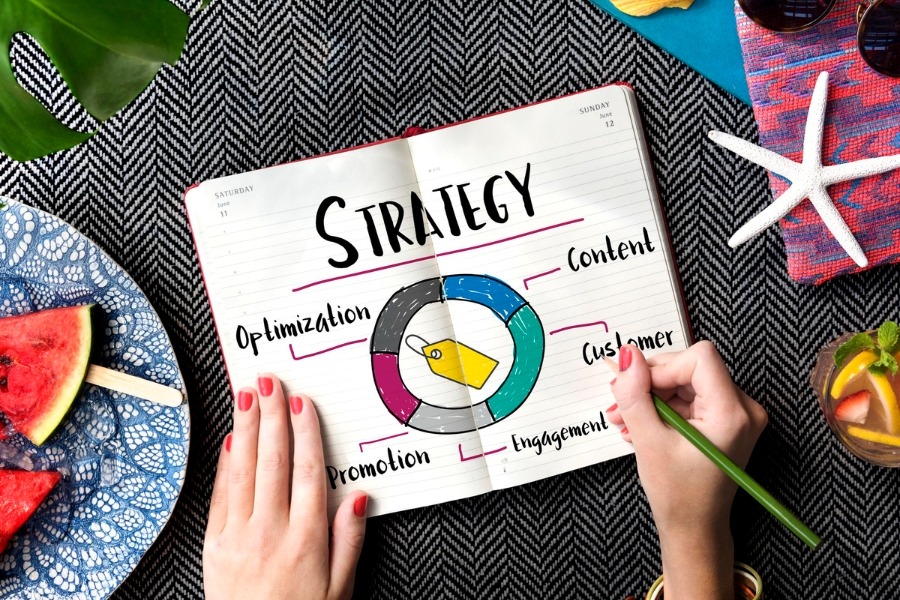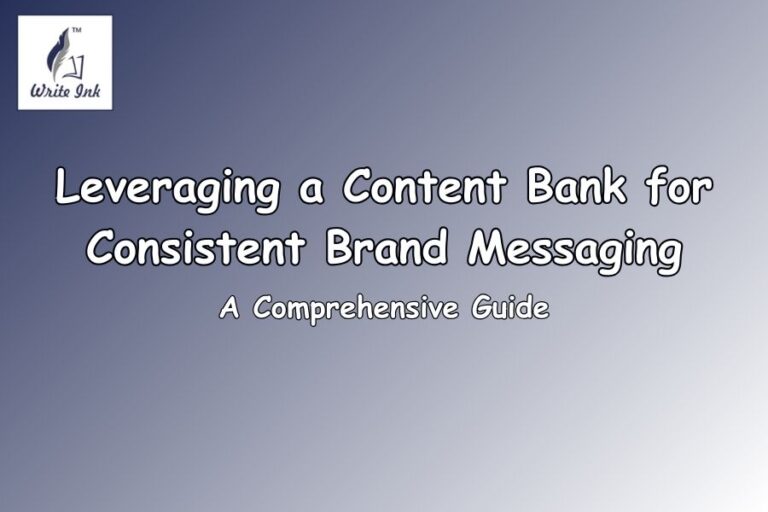Boost Your Online Presence with SEO Content: Strategies That Work
The Importance of SEO Content for Online Presence

SEO content has become an indispensable tool in creating content. SEO stands for search engine optimisation. Well, going quite literally by the term SEO means using the search engine to the best of its potential. When it comes to content, SEO becomes highly important primarily because it is the search engine that will have your content. But how is using this search engine to make the best use of it for your content possible? That’s precisely where SEO content comes into the picture. It optimises or structures your content so that the search engine gives preference to your content. We at Write Ink specialise in SEO content and present some strategies that help boost your online presence!
SEO content creation is a skill that helps in SEO content optimisation. It may all sound very technical, but once you employ SEO content strategy in your content, your content automatically ranks higher on the website, helping drive increased organic traffic and boosting your online presence. Today, the world is thriving on content. In such a situation, it becomes imperative to be visible amongst the tons of content available at one’s disposal. Standing out only based on unique content is necessary but does not guarantee to outshine every time. SEO content helps you to be out there and be present within the first few search results so that the user instantly clicks on your website’s link!
Understanding Search Engine Optimization

Search engine optimisation aims for higher ranking and visibility, i.e., getting organic free traffic to your website. The process starts with the user searching for anything on any search engine; for example, you search ‘content strategies’ on Google. Now, Google, a search engine, employs various algorithms to give the best search result to answer the user’s query. The results are based on the words the user puts in the search box of the search engine. Now, the words or similar words are the keywords that the search engine algorithms look for, pick up, and accordingly display on the search results, further ranking them based on the site most likely to answer the user’s query.
We may not decipher the algorithms as that bit is technical, but the process can be understood, mainly divided into three steps – crawling, indexing and ranking. Crawling entails looking for the content that matches the query; this is done by looking for relevant keywords, title tags and other criteria most likely to answer the query. After crawling, it is indexing, the deciding stage whereby the algorithms decide whether the content is relevant enough to be displayed on search results based on criteria of content quality, efficiency, etc. After crawling and indexing, the third stage is the ranking stage, when the sieved results are ranked based on keywords, the speed at which a web page loads, the website’s reputation, etc. Thus, it is an intricate process but happens within seconds and presents the best results for your query.
Thus, priming your content in a manner that helps your content qualify these yardsticks laid down by the algorithms will do the trick, and that’s what SEO does. We hope you now understand why SEO content is essential and get some understanding of how it works.
Keyword Research and Selection

SEO content is primarily based on keyword research and selection. After understanding the entire deal of SEO, we assume you know the value the keywords hold by now. Keyword research is one of the first initial steps to be undertaken while drafting your SEO content. Keywords to explain are the words most often used by the audience in that Google search box. Content is quintessentially a solution, and the user uses specific words to state their problem; if you employ the exact words in your content, which gives out a solution to their problem, your website will be chosen!
Various keyword research tools give valuable insights and an extensive list of keywords the audience frequently uses, trending and gaining importance occasionally. It is updated and helps tremendously to structure your SEO content and target the audience accordingly. The volume of keywords users use on search engines is often measured monthly. To kickstart your keyword research and selection process, first narrow down topics surrounding your business that might interest the audience most and use keyword tools to check the monthly search volume of these topics. Once you evaluate that these topics can turn into your potential keywords, add more relevant ones to make them precise to the user’s intent. Google Keyword Planner, Ahrefs, and Semrush are some prominent keyword tools. A good mix of head terms (shorter keywords) and long-tail keywords (having more than three to four words) helps balance. Thus, you are set with a list of keywords ready to be incorporated.
On-Page Optimization Techniques

SEO content is not only about the keywords; though it holds primacy, it entails various other components one must consider. On-page optimisation is a strategy to ensure your website is best optimised for users and search engines to rank. It helps make your website more accessible and easier to use. When dealing with on-page optimisation, the user’s intent and ease should be given precedence. Firstly, putting up quality content that is unique and has a fresh take is essential so that the user is instantly captivated by your website. Of course, when we talk about SEO content, placing your keywords at the right places and extensively using them in the headlines and subheadings, along with the first paragraph of your content, is necessary so that the user gets what they are looking for, which keeps them hooked.
Adding meta descriptions that give a precise summary of what your website entails and a call to action is always a good practice, as it acts as a magnet to pull the user to click. It is always best to divide your content into various headings and subheading/s to be user-friendly. Offering hyperlinks is another optimisation technique that helps retain the user to your website by quickly navigating to different web pages and easily giving valuable insight. Adding external links referring to sources adds to the credibility. Using images along with brief descriptions increases chances of higher ranking on Google images and becomes user-friendly. Lastly, it is imperative to optimise URLs as a long, intimidating URL may not be very conducive to clicking for the user.
Creating high-quality and Engaging Content

Of course, SEO content is necessary to drive your ranking and visibility, but that doesn’t mean your raw content doesn’t hold importance. Your content’s quality and engagement traits are equally evaluated while listing it on search results. Suppose only your content strikes a chord with the audience and gives them what they are looking for engagingly and, interestingly, absolutely compelling them. In that case, your content is booming and more likely to be consumed. One may end up applying all the SEO content optimisation strategies, but if the content doesn’t resonate with the user, ends up being too generic or technical, or keyword stuffed, chances are search engines may list it quite below in search results. High-quality and engaging content is a part of SEO content strategy. But often, in the technicalities, SEO content quality is compromised, which should not be the case. Giving out authentic and reliable content, with no duplication and the intent of providing solutions and ease to users, should be the primary checklist for your content. Rest all, then follow suit!
Optimising Content for User Experience

Once you provide the SEO content, the next step is to ensure the best possible user experience. Of course, it is primarily the content that determines the user’s experience, but other aspects need to be checked for the best possible user experience. First and foremost is easy navigation and usability across all types of devices, especially mobiles. A faster load time is essential as longer a website takes to load, it tests the user’s patience, making them switch to another website. Ensure your content is divided in an organised manner, showing a hierarchy, taking a funnel approach, and having more in-depth and nuanced information. Using attractive calls to action is the best way to uphold active user engagement. Always opt for high-resolution images, as visuals have a positive user experience. Keeping legible and readable font style and size is another crucial point. Also, ensure your website uses white spaces as required as it adds to the visual appeal, makes it look more organised and tidy, helps highlight certain aspects, and gives breaks as needed.
Building Backlinks and Increasing Domain Authority

Backlinks, simply put, are a kind of validation or recommendation from other websites that instantly increase your credibility and authenticity. Whenever you buy something, you ask various people about it just to get some idea to make a wise decision. Backlinks in SEO content are similar. Backlinks are links to your websites present on other websites, which direct the user to your website. To simplify it, your website is mentioned in another company or domain’s website as a matter of recommendation or reference, as it may have related and valuable information. Getting backlinks may not be easy as it requires one to directly ask for them from other owners, or maybe get it in case your website’s content is a world apart, or maybe buy it or some website allows you to add your link directly. However, reliability is low on the last option. As soon as you build backlinks, the authority of your domain automatically increases; as it gets mentioned by more sources or maybe more white hat sources, it makes the user believe that your content is more credible, automatically increasing ranking and visibility.
Monitoring and Analyzing SEO Performance

Simply putting up SEO content is not enough; constantly monitoring, analysing and revamping is necessary to stay relevant throughout. Also, just employing an SEO content strategy doesn’t guarantee success; fluctuations are bound to happen; however, to ensure no drastic downfall, one needs to be vigilant and take necessary action for continued growth in ranking and organic traffic. Here, we mention some criteria that will help you monitor and analyse the performance of your SEO content, which can be done via Google Analytics or other tools widely available online.
Some metrics are evaluating the user time on the page, the bounce rate at which people leave your website should be low, and the speed at which your page loads, as that impacts the user experience. Checking and analysing the visibility of your website on search engine result pages is imperative. Checking the click-through rate which is the number of clicks by the user on your websites, checking the conversion rate, i.e., if the user is actually acting upon the call to action, turning to a customer, registering, etc. Also, keeping a tab on the site exit points, where most users exit your websites, is necessary so that steps may be taken to make relevant changes. The list is endless, just like content creation, which is infinite, but it’s all worth it.
SEO Content Promotion Strategies

Once your SEO content is all set with all the SEO SOPs in place, it’s time to add fuel to the fire and promote from your end to ensure that your content reaches as many as possible. Promoting your content is probably the first step to take after you are done publishing it. Also, informing and keeping your audience intrigued by pre-informing about your content update at a later date is a good promotion strategy. Timely posting of your SEO content, in the sense that it’s relevant to any surging trend or resonating with any current happening, always helps. Easy and accessible sharing options are imperative and the best way to ensure easy promotion. Providing links of your one content in another content is also an excellent way to direct users to content you want to drive traffic to. Email marketing, newsletters, posting on all your social media platforms asking for promotion from influencers and investing in online advertising are other good ways.
Conclusion

There, we end with optimised information on SEO content for you. Write Ink is an exemplary content agency specialising in SEO content and much more. Visit our website and social media handles to know more.
FAQs
1. What is SEO content?
SEO content refers to any content created with the aim of improving search engine rankings. It involves incorporating keywords, optimizing meta tags, and creating valuable content that attracts and engages users.
2. Why is SEO content important?
SEO content helps websites rank higher in search engine results pages (SERPs), leading to increased visibility, traffic, and ultimately, more potential customers.
3. What are some key strategies for creating effective SEO content?
- Conduct keyword research to identify relevant terms.
- Create high-quality, valuable content that addresses user needs.
- Optimize on-page elements like titles, meta descriptions, and headers.
- Use internal and external links strategically.
- Regularly update and refresh content to keep it relevant.
4. How can I optimize my website for SEO?
- Ensure your website is mobile-friendly.
- Improve website speed and performance.
- Create a clear site structure for easy navigation.
- Optimize images with descriptive alt text.
- Implement schema markup to enhance search engine understanding of your content.
5. What role does content quality play in SEO?
Content quality is paramount for SEO success. Search engines prioritize content that is informative, engaging, and valuable to users. High-quality content tends to earn more backlinks and social shares, boosting its visibility in search results.
Image Reference: Freepik
Disclaimer: All trademarks, logos, and brand names are the property of their respective owners. All company, product, and service names used in this website are for identification purposes only. Use of these names, trademarks, and brands does not imply endorsement.







